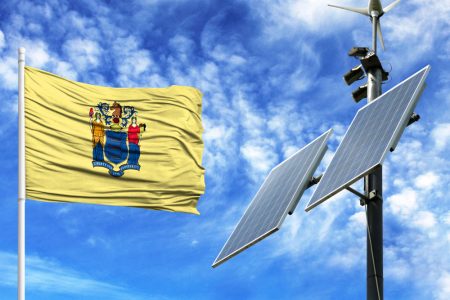New Jersey Unveils Master Plan for 14 GW More Solar Energy Through 2035 and Beyond
 New Jersey Governor Phil Murphy is making a pledge to fight climate change in his 290-page document that outlines the state’s master energy plan. This extensive plan includes electrification initiatives that call for more solar charging vehicles and solar heating buildings. The master plan has a goal of 17 GW of solar by 2035, and given the 3 GW of existing solar, speculations suggest that this goal can be comfortably met by adding just 950 MW of solar each year through 2035 and 400 MW of distributed energy each year through 2030.
New Jersey Governor Phil Murphy is making a pledge to fight climate change in his 290-page document that outlines the state’s master energy plan. This extensive plan includes electrification initiatives that call for more solar charging vehicles and solar heating buildings. The master plan has a goal of 17 GW of solar by 2035, and given the 3 GW of existing solar, speculations suggest that this goal can be comfortably met by adding just 950 MW of solar each year through 2035 and 400 MW of distributed energy each year through 2030.
By 2050, the governor would like to reach 32 GW of solar, 11 GW of offshore wind and 9 GW of solar battery storage. What do all these numbers look like in the grand scheme of things? New Jersey’s ambitious least-cost clean energy strategy hopes to reach 50% clean energy by 2030 and 100% clean energy by 2050. New Jersey’s master plan is further aiming to slash greenhouse gas emissions, greatly reducing the state’s contribution to climate change.
A least cost strategy was supported and identified through analysis from the Rocky Mountain Institute. The master plan starts New Jersey on a path towards reducing its carbon emissions by 80% and reaching 100% carbon-neutral electrical generation by 2050. In order to meet these goals, future costs of solar and solar storage would have to meet the “low” forecast as stated in the National Renewable Energy Laboratory’s Annual Technology Baseline. New Jersey’s transportation, electricity and buildings will all have to reduce their emissions significantly in the upcoming years to meet the clean energy targets by 2050.
New Jersey’s Extensive Clean Energy Initiative
Looking at those levels of solar capacity, New Jersey’s current electricity load would double, with electrification of 90% of space and water heating in many buildings as well as must vehicles running on the power of the sun. Governor Murphy called this master plan a way of “weaning the state off its century-old addiction to fossil fuels.”
The energy strategy will cost almost the same as “business as usual”, increasing the energy system spending by only 0.2% of gross state product in the next 30 years and further reducing total costs when you count clean air health benefits and the social cost of carbon. In this strategy scenario, New Jersey is including fossil fuels but making an effort to be zero-carbon biogas and hydrogen by 2050 and beyond.
New Jersey—A State of Firsts
In one of the most important, seven key strategies of Governor Murphy’s master plan, New Jersey state law will now not sign off on a proposed building project if it “does not align with our broader efforts to combat climate change.” says Murphy, further adding “It will either need to be amended, or it will not be approved. In this, New Jersey will lead the nation and set the standard.”
This radical need for change and positive forward movement comes from the challenges the Governor recognizes that the state of New Jersey is imminently facing. With steadily rising sea levels along the Jersey coast and the harmful effects of fossil fuel emissions affecting the health of millions, this master energy plan looks to help abolish some of these challenges. At Intersect Energy, our turnkey energy solutions provide further assistance to the efforts put forth by the state of New Jersey. We offer assessment, design, financing, installation and alternative energy management to commercial and industrial companies who are looking to lessen their carbon footprint. For continued news in renewable energy, make sure to follow us on LinkedIn.
 2019 saw an abundance of clean energy dominance in the United States. From 11 states having a 100% commitment or achievement to clean energy to solar and solar battery storage prices becoming more and more affordable throughout the country, clean, renewable energy is here to stay. With that being said, we’re looking to the future. What will 2020 hold? What can we expect from clean energy in the next decade?
2019 saw an abundance of clean energy dominance in the United States. From 11 states having a 100% commitment or achievement to clean energy to solar and solar battery storage prices becoming more and more affordable throughout the country, clean, renewable energy is here to stay. With that being said, we’re looking to the future. What will 2020 hold? What can we expect from clean energy in the next decade?